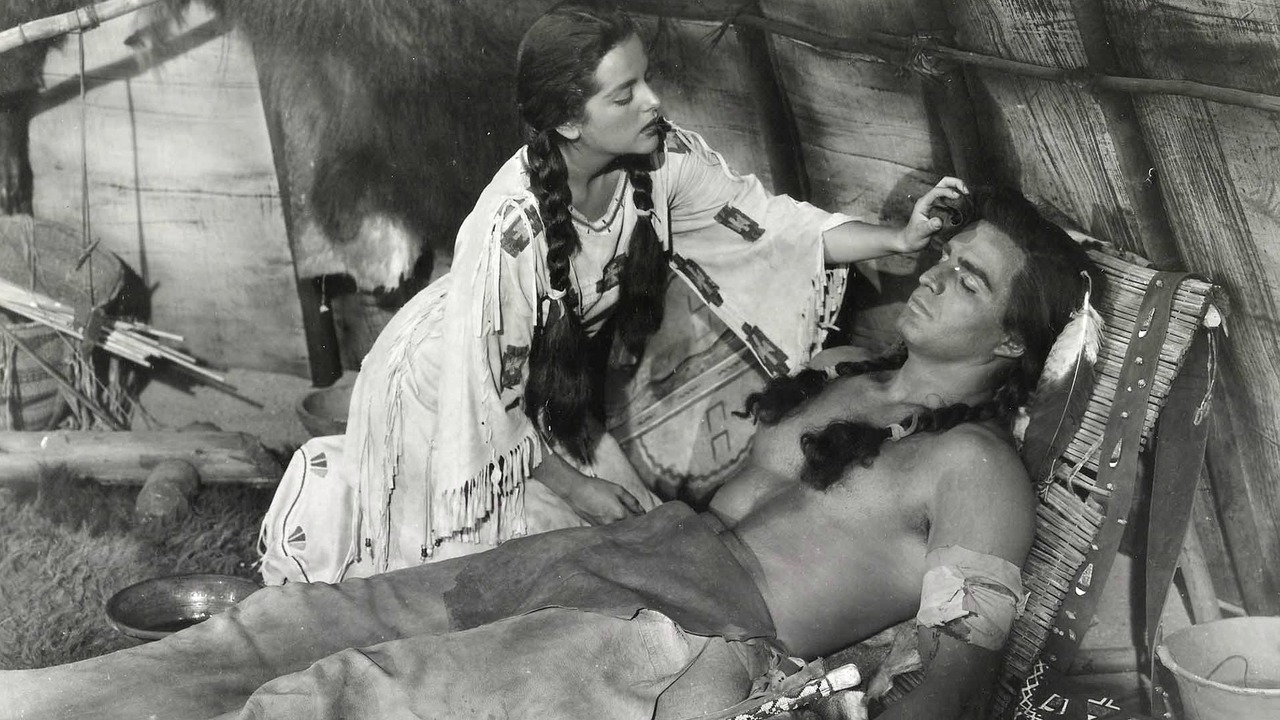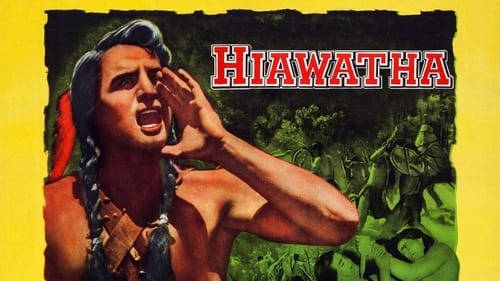


After a striking visual opening (with no main credits) combined with a fine reading along the lines of the great Henry Longfellow poem (any further resemblance beyond this point is absent) this ultra low budget Monogram flick simply ambles along...quite sadly losing its way, as it attempts to show life among the American Indian tribes before the fork- tongued 'white eye' came to 'civilize' the lands. Apart from wild animals and weather, their biggest worry was looking out for what other tribes might do to them! Lesser, or lessor.At times, some interesting musical arrangements by composer/arranger Marlin Skiles (the arranger of Bernstein's 1954 classic 'On The Waterfront') help to lift the otherwise ordinary score a notch or two but never enough to add much depth. The filming locations are wonderful to look at but the two color Cinecolor process was not always good at reproducing certain hues (while some prints looked better than others) it was just not up to three strip Technicolor standards. The director of photography Harry Neumann went on to photograph 'High Society' in 55.Performance wise, Vince Edwards as the Indian warrior was cleverly described by one reviewer as playing his role with all the verve of a wooden Indian. His underdeveloped 'love at first sight' for Minnehaha is bordering on laughable. Kieth Larson as the evil war monger is unfortunately the better performer. I always enjoy seeing Morris Ankrum on screen but as one of the wiser elders, he gets killed off early in the story. The rest of the cast are generally below average or were in need of a better script and direction. It looks like there were no native Indians amongst the cast! if there were, they went unnoticed. I'm unable to confirm if the terrific performer of the ceremonial wedding dance(Chabon Jadi) is an Indian native? perhaps someone might be able to enlighten us (very little info on his IMDb page)....Anyone?Better credentials and more money might have helped to lift this version to higher levels, but as Monogram Pictures last release, its appeal will be considerably limited. KenR
... View MoreTrivia buffs might not help but notice and ask, was this a Monogram Picture, an Allied Artists movie like on some lists, or a Warner Brothers movie like the new box cover seems to say? At one stage or another, I guess it belonged to one of them. Marlin Skiles' musical score and scenic locations at Bass Lake really add a great deal to a rather wooden plot where Hiawatha attempts to prevent war with a nearby tribe that's being provoked by murders one of his own tribal leaders has committed. Vince Edwards (TV's Ben Casey) seems at his best romancing Minehaha while he tries to locate his lost father from the other tribe. Yvette Dugay is magnetic in her part, but Victor Mature and Debra Paget they're not. The absorbing atmosphere just takes me to a different place and time so much to forgive any dullness or holes in the plot.
... View MoreThis 1952 low budget film is one of the few attempts to depict Native American life before European interference. It is a realistic portrayal of the legend of Hiawatha, loosely based on the Longfellow poem, leaving out the supernatural elements. As such, it is moderately successful. A much depilated Vincent Edwards in the lead role tries hard, but he is a bit of a wooden Indian, thoroughly upstaged by the much more interesting warmonger Popokeewis, his bitter enemy (Keith Larsen). John Ericson played Hiawatha 6 yrs. later in the Shirley Temple Storybook TV production with the fantasy elements very much in play. Film buffs interested in Native American life should see this modest piece, it is a sincere effort, though it's put in the shade by such later films as the splendid 1980 "Windwalker."
... View More